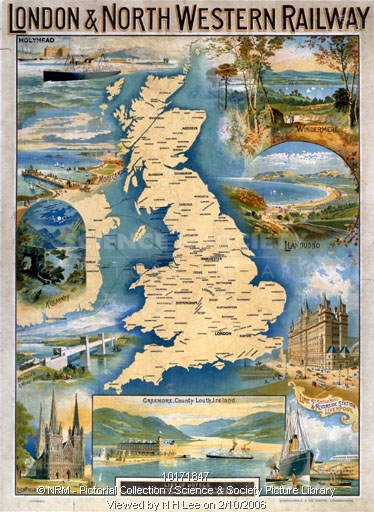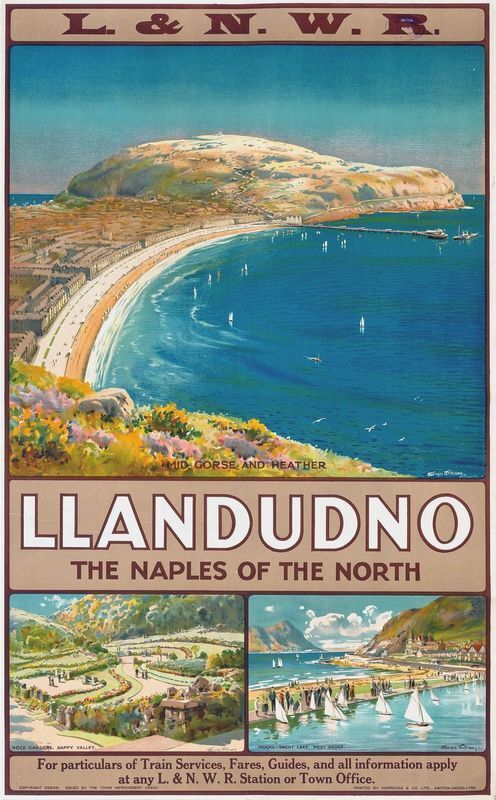The London & North Western Railway
Until 1923, the London & North Western Railway was the largest railway in Britain. It had been formed in 1846 by the merger of:
- The Grand Junction Railway, which ran from Earlestown to Birmingham, and which had already merged with the Liverpool and Manchester.
- The London and Birmingham Railway .
- The Manchester and Birmingham, which in practice ran only from Manchester to Crewe, with a branch to Macclesfield.
Within a few years of its formation the LNWR had built or taken over several other railways. The main line – which we now know as the West Coast Main Line – ran from London Euston to Carlisle where traffic was passed on to its Scottish partner, the Caledonian Railway, for Glasgow, Edinburgh and Aberdeen. Other main lines ran to Holyhead (by mail steamer to Kingstown (Dun Laoghaire) or LNWR steamer to Dublin or Greenore), Liverpool, through Manchester to Leeds, to Peterborough and to Merthyr and Swansea in South Wales. Alliances with other companies took the LNWR’s distinctive plum and spilt milk liveried carriages to cities such as Bristol, Newcastle, Hull, Harwich and even Brighton, so that few areas would not have seen the LNWR. The railway also handled the Irish Mail for the Government between Euston to Holyhead.
The LNWR was known as the ‘Premier Line’, disputed by many, but as the largest joint stock company in the United Kingdom, collecting a greater revenue than any other company and having the Liverpool & Manchester as one of its ancestors, it deserved the title.
The LNWR was an immense undertaking. At its peak, it ran a route mileage of more than 1,500 miles. By 1913, just before World War I, it employed 111,000 people and was the largest railway in Britain in the pre-grouping period (before 1923). For decades, it was the largest joint stock company in the World.
The LNWR served the backbone of the country. It linked the four most important cities in Britain, and all the important industrial areas of the West Midlands, Lancashire, Yorkshire, Manchester, Liverpool and the docks. It ran the route to Scotland via Carlisle, Ireland via North Wales, and South and Central Wales.
The system in the year the LNWR was formed.
The System just before the LNWR was amalgamated with other railways into the LMS
The company built its rolling stock and locomotives at three major centres:
- Crewe – the greatest locomotive works in Britain (and perhaps the World)
- Earlestown – the wagon works
- Wolverton – the carriage works
After the First World War the railways of Britain were run down and beginning to suffer from competition from road traffic. The government forced all companies to merge into four large groups from January 1st 1923 – the LMS, LNER, GWR and the SR. The LNWR joined with the Midland, Lancashire & Yorkshire, Caledonian, Glasgow South Western, Highland, North Stafford, Furness and a few smaller railways to form the London Midland & Scottish Railway. In 1948 the railways were nationalised with the formation of British Railways, later to become British Rail in 1965. So seventy five years of tradition ended. Fortunately, thousands of photographs had been taken since the early days of the LNWR. They remain mementoes of a great railway.
Much of the LNWR infrastructure remained virtually unchanged until the BR modernisation program started in 1955 and began to sweep them away. Even today we can see something of the style and craftsmanship of the LNWR, some still in place on the modern railway and some in preservation.
Find out more.










